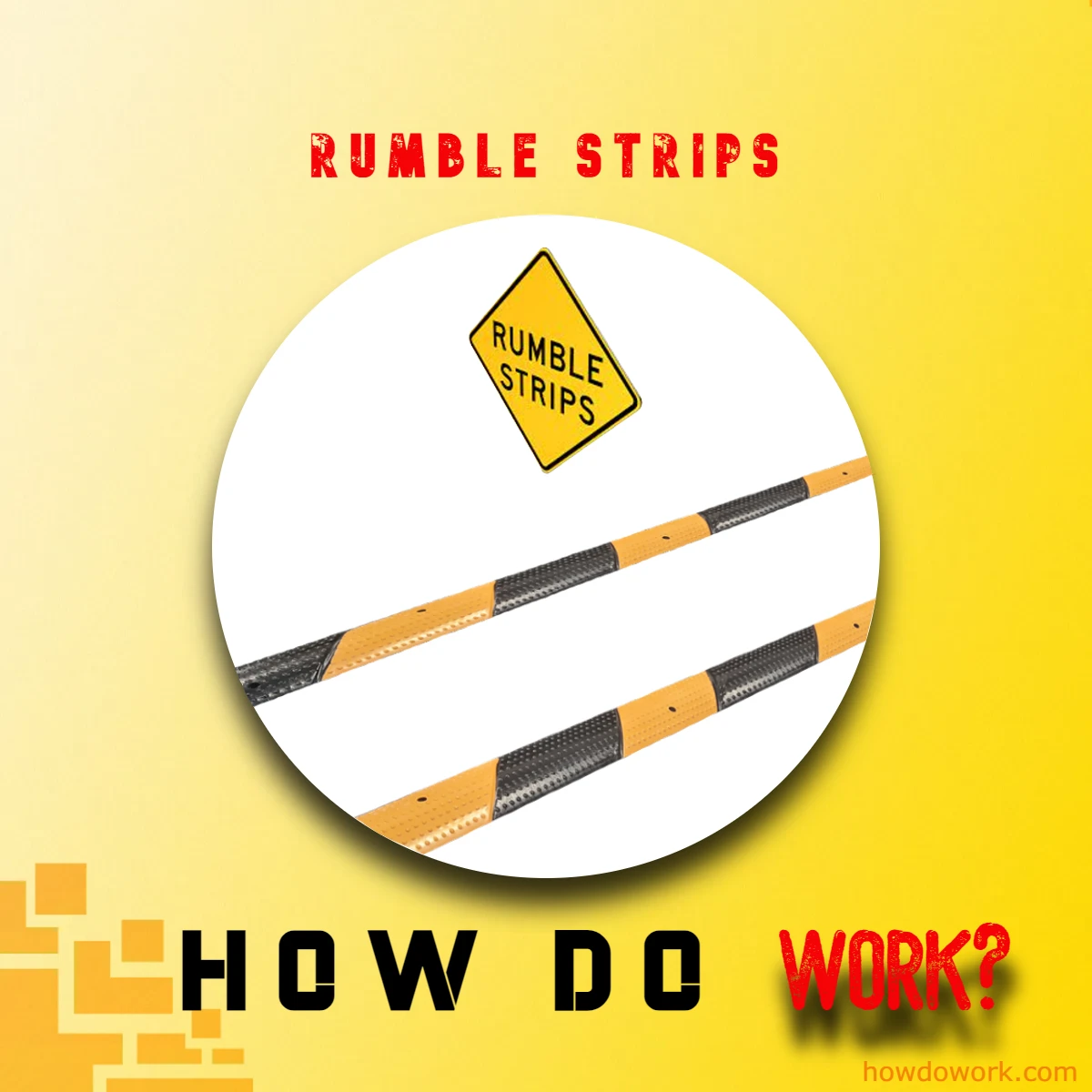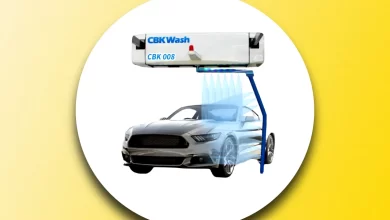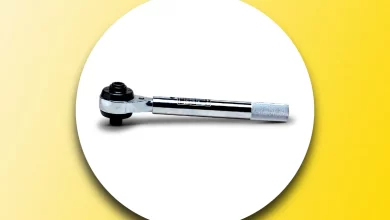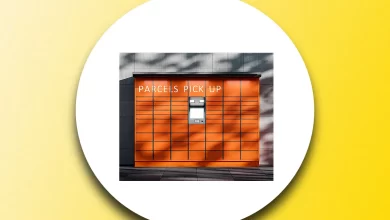
Rumble strips are tactile road safety features designed to enhance driver alertness and reduce accidents. These strips, typically made up of raised bumps or grooves, work by creating both audible noise and vibrational feedback when a vehicle’s tires cross over them. The sudden sensation and sound serve as a jolt to the driver’s attention, helping to prevent lane departure accidents, drowsy driving, and maintaining proper lane discipline. Rumble strips play a vital role in road safety by reminding drivers to stay alert and focused, ultimately contributing to safer journeys on our roadways.
| Aspect | Centerline Rumble Strips | Edge Line Rumble Strips | Shoulder Rumble Strips | Transverse Rumble Strips | Raised Rumble Strips |
|---|---|---|---|---|---|
| Purpose | Prevents lane departure | Prevents vehicles running off the road | Prevents vehicles from leaving the roadway | Slows down vehicles approaching intersections or pedestrian crossings | Encourages speed reduction and lane discipline |
| Location | Center of the road | Road edges | Road shoulder | Typically at intersections, crosswalks, or toll booths | Can be placed in various road sections |
| Direction of Strips | Parallel to traffic lanes | Parallel to traffic lanes | Parallel to traffic lanes | Perpendicular to the road direction | Parallel to traffic lanes |
| Feedback Type | Auditory and tactile | Auditory and tactile | Auditory and tactile | Primarily auditory | Auditory and tactile |
| Lane Departure Warning | Yes | Yes | Yes | Not a primary function | No |
| Traffic Flow Efficiency | Can improve traffic flow | Can improve traffic flow | Can improve traffic flow | Can reduce speed before critical areas | Can reduce speed in various road sections |
| Adaptability | Suitable for divided highways | Suitable for highways and local roads | Suitable for highways and local roads | Suitable for intersections and crossings | Versatile for various road environments |
| Environmental Impact | Minimal | Minimal | Minimal | Minimal | Minimal |
| Driver Adaptation | Possible over time | Possible over time | Possible over time | Less likely due to specific use cases | Possible over time |
| Maintenance | Regular maintenance needed | Regular maintenance needed | Regular maintenance needed | Regular maintenance needed | Regular maintenance needed |
| Effect on Speeding | Can discourage speeding | Can discourage speeding | Can discourage speeding | Can encourage speed reduction | Can encourage speed reduction |
| Noise Levels | Can be noisy | Can be noisy | Can be noisy | Noisy | Less noisy |
Contents
What are the rumble strips work?
In the realm of road safety, few features hold as much significance as the unassuming yet highly effective rumble strip. These unobtrusive road markers, seemingly mere undulations in the asphalt, carry a profound responsibility: to keep drivers safe and alert during their journeys. But have you ever wondered, as you felt your vehicle’s tires engage with those textured patterns, how these rumble strips work?
The symphony of vibrations and the staccato rhythm of noise generated by rumble strips are far from accidental; they are the deliberate orchestrations of roadway engineers to remind us of our responsibility behind the wheel. From centerline strips preventing head-on collisions to edge line strips guiding us away from perilous drop-offs, each type serves a unique purpose. However, their effectiveness hinges not only on engineering precision but also on driver awareness.
How Rumble Strips Function
Picture this: you’re cruising down the highway, lost in thought or perhaps distracted by your favorite tune on the radio. Suddenly, your vehicle starts to emit a loud, rhythmic noise, and you feel a distinct vibration. That’s the unmistakable sign that you’ve just crossed over a set of rumble strips.
But how do they work their magic?
Rumble strips function as tactile warnings to drivers. They’re primarily designed to jolt a motorist’s attention and alert them to potential dangers or changes in road conditions. Here’s how they achieve this:
1. Vibration and Noise:
Rumble strips are characterized by a series of raised, evenly spaced bumps or grooves on the road’s surface. When your vehicle’s tires roll over these textured surfaces, it creates vibrations and noise inside the cabin. These sensations serve as a sudden and attention-grabbing wake-up call for the driver.
2. Lane Departure Warning:
One of the key purposes of rumble strips is to prevent lane departure accidents. If a driver starts drifting out of their lane unintentionally, the sudden vibration and noise from the rumble strips act as a gentle but effective reminder to stay in their designated lane.
3. Reduced Speed:
Rumble strips can also encourage drivers to reduce their speed. The sensation of driving over the textured surface can be uncomfortable, motivating the driver to slow down and regain control of their vehicle.
4. Drowsy Driver Alert:
Long drives, especially during the night, can lead to driver fatigue. Rumble strips are a valuable tool in alerting drowsy drivers. The abrupt tactile and auditory feedback can help keep them awake and attentive.
5. Crosswalk Safety:
In urban areas, rumble strips are often used at crosswalks. Pedestrians benefit from the added safety as the noise and vibrations make them more noticeable to approaching vehicles.
Now that we’ve unraveled how rumble strips operate, let’s take a closer look at the different types you might encounter on the road.
Types of Rumble Strips
Rumble strips come in various shapes and sizes, each tailored to specific road safety needs. Here are some common types of rumble strips:
- Centerline Rumble Strips:
- Edge Line Rumble Strips:
- Shoulder Rumble Strips:
- Transverse Rumble Strips:
- Raised Rumble Strips:
Now, let’s delve into each type to understand their unique applications and benefits.
Centerline Rumble Strips:
Centerline rumble strips are typically installed along the centerline of a road or highway. Their primary purpose is to prevent head-on collisions and keep drivers in their respective lanes. When a vehicle crosses the centerline unintentionally, the vibration and noise from these strips serve as a clear warning to correct their course.
These strips have proven to be remarkably effective in reducing the frequency of fatal accidents caused by drivers drifting into oncoming traffic lanes. Their low cost and minimal maintenance requirements make them a cost-effective safety measure for many road authorities.
Edge Line Rumble Strips:
Edge line rumble strips are installed along the outer edges of a roadway. They serve a similar purpose to centerline strips but are geared towards preventing vehicles from running off the road or colliding with obstacles such as guardrails or ditches. When a driver veers too close to the edge of the road, the rumble strips provide immediate feedback, prompting them to steer back onto the safe driving path.
These strips are particularly valuable on narrow roads or highways with limited shoulder space. They are also beneficial in low-visibility conditions, such as heavy rain or fog, where drivers may have difficulty discerning the road’s edge.
Shoulder Rumble Strips:
Shoulder rumble strips are installed on the outermost portion of the road, just before the actual shoulder or the roadside. Their primary purpose is to prevent vehicles from inadvertently leaving the roadway, especially in situations where the shoulder area is hazardous, like drop-offs or soft soil.
These strips are instrumental in protecting drivers from potential rollovers or more severe accidents that can occur when a vehicle exits the road entirely. By providing a jarring sensory experience, shoulder rumble strips effectively discourage drivers from straying off the pavement.
Transverse Rumble Strips:
Transverse rumble strips differ from the other types in that they are placed perpendicular to the direction of travel. You’ll often encounter them at intersections, pedestrian crosswalks, or toll booths. Their purpose is to slow down vehicles as they approach these critical areas, enhancing safety for pedestrians and reducing the risk of high-speed collisions.
When a vehicle drives over transverse rumble strips, the abrupt sensation prompts drivers to reduce their speed and exercise caution, which is particularly crucial in locations with heavy foot traffic.
Raised Rumble Strips:
Raised rumble strips, also known as profiled or milled rumble strips, are created by milling grooves into the road surface, leaving raised, textured patterns. These strips are not as harsh on vehicles as some of the other types, making them suitable for use in areas where minimizing discomfort to drivers is a consideration.
Raised rumble strips are often used in residential areas, school zones, and near hospitals, where the emphasis is on slowing down traffic without causing excessive noise or vibration. They strike a balance between safety and driver comfort.
The Science Behind Rumble Strip Effectiveness
Now that we’ve explored the various types of rumble strips and their applications, let’s delve into the science behind why they are so effective at enhancing road safety.
1. Sensory Overload:
When a vehicle’s tires roll over rumble strips, the driver’s senses are bombarded with feedback. The combination of noise, vibration, and tactile sensations creates a sensory overload that quickly grabs the driver’s attention. This instant alertness is critical in preventing accidents caused by inattentiveness or drowsiness.
2. Pavlovian Conditioning:
Rumble strips create a form of Pavlovian conditioning for drivers. Over time, motorists associate the discomfort of driving over these strips with the need for corrective action. This conditioning helps reinforce safe driving behavior, reducing the likelihood of lane departure accidents.
3. Minimal Room for Error:
The precision engineering of rumble strips leaves very little room for error. They are designed to be effective at low speeds, so even minor drifts from the driving lane trigger the warning signals. This makes them an excellent safety measure, especially on high-speed roads where split-second reactions can make all the difference.
4. Cost-Effective Safety:
Rumble strips offer a high return on investment for road authorities. Compared to other safety measures like guardrails or electronic warning systems, rumble strips are relatively inexpensive to install and maintain. Their effectiveness in reducing accidents makes them a cost-effective choice for enhancing road safety.
5. Continuous Operation:
Unlike electronic warning systems that can suffer from technical malfunctions, rumble strips are always operational. They don’t rely on power sources or complex technology, ensuring they work round the clock to keep drivers safe.
6. Minimal Environmental Impact:
Rumble strips have a minimal environmental footprint. They don’t require significant resources to manufacture or install, making them an eco-friendly choice for road safety enhancement.
The Benefits of Rumble Strips
Now that we’ve explored how rumble strips work and their different types, let’s delve deeper into the numerous benefits they offer to both drivers and road authorities.
1. Accident Reduction:
Rumble strips have a proven track record of reducing accidents, especially those caused by lane departure. By alerting drivers to unintended movements, they help prevent head-on collisions, rollovers, and collisions with roadside hazards. The simple act of driving over rumble strips can be a lifesaver.
2. Cost Savings:
Implementing rumble strips is cost-effective compared to alternative safety measures like guardrails or electronic warning systems. They require minimal maintenance, and their durability ensures they provide long-term benefits without significant ongoing expenses.
3. 24/7 Operation:
Rumble strips operate continuously, regardless of weather conditions or time of day. They don’t rely on electricity or technology that could fail, ensuring they are always ready to alert drivers when needed.
4. Drowsy Driver Prevention:
Fatigue is a significant factor in road accidents. Rumble strips are particularly effective at jolting drowsy drivers awake, making them a valuable tool for preventing accidents on long journeys, especially during the night.
5. Improved Road Efficiency:
Rumble strips can help improve traffic flow and reduce congestion by encouraging drivers to maintain proper lane discipline. This leads to a smoother and more efficient traffic flow on highways and major roadways.
6. Minimal Environmental Impact:
Unlike some safety measures that can have adverse environmental effects, rumble strips have a minimal environmental impact. They don’t contribute to pollution or habitat disruption and are a sustainable choice for enhancing road safety.
7. Flexibility in Design:
Rumble strips are highly customizable in terms of depth, width, and spacing. This flexibility allows road authorities to tailor their design to specific road conditions, ensuring maximum effectiveness.
8. Versatility:
Rumble strips can be used in various settings, from busy highways to quiet residential areas. Their adaptability makes them a versatile solution for improving road safety across different environments.
9. Public Awareness:
The widespread use of rumble strips has made them a well-recognized safety feature among the general public. Drivers are more likely to be aware of their presence and their purpose, which further enhances their effectiveness.
10. Complementary to Other Safety Measures:
Rumble strips can complement other safety measures, such as road signs and traffic signals. When used in conjunction with these elements, they create a comprehensive safety network that helps prevent accidents and save lives.
Common Reasons for Rumble Strip Failures
While rumble strips are highly effective in enhancing road safety, they are not immune to issues that can lead to their failure or reduced effectiveness. Let’s explore some common reasons why rumble strips may fail or not work as intended:
1. Wear and Tear:
Over time, the constant traffic flow over rumble strips can cause them to wear down. The abrasive action of vehicle tires, especially heavy trucks, can smooth out the textured surface, reducing the intensity of vibrations and noise. This wear and tear can compromise their ability to alert drivers effectively.
2. Lack of Maintenance:
Rumble strips require regular maintenance to ensure they remain in optimal condition. If road authorities neglect maintenance routines, issues like debris accumulation, vegetation growth, and damage from snowplows or other maintenance equipment can occur. This can diminish the strips’ performance.
3. Improper Installation:
The effectiveness of rumble strips depends on proper installation. If they are not installed to the correct specifications, including depth, width, and spacing, they may not provide the desired tactile and auditory feedback to drivers. Poorly installed rumble strips can be less effective or even uncomfortable for drivers.
4. Noise Complaints:
While the noise generated by rumble strips is essential for alerting drivers, it can also lead to complaints from nearby residents. In response to these complaints, some road authorities may reduce the intensity of the strips or remove them altogether, compromising safety for the sake of community satisfaction.
5. Insufficient Warning Signs:
Rumble strips are most effective when drivers are aware of their presence. Insufficient or inadequate warning signs leading up to rumble strip installations can catch drivers off guard, reducing the strips’ effectiveness. Proper signage is crucial to prepare drivers for the sensory feedback they will experience.
6. Weather-Related Issues:
Severe weather conditions, such as heavy snowfall or freezing temperatures, can impact the effectiveness of rumble strips. Accumulated snow and ice can cover the strips, rendering them less noticeable to drivers. Additionally, extreme cold can reduce the flexibility of the road surface, affecting the intensity of vibrations.
7. Incorrect Placement:
Placing rumble strips in the wrong locations can lead to their failure. For example, if they are installed too close to intersections, driveways, or other areas where vehicles often stop, drivers may become desensitized to the vibrations and noise, diminishing their effectiveness.
8. Driver Adaptation:
Over time, some drivers may become accustomed to driving over rumble strips and no longer perceive them as a warning signal. This phenomenon, known as “habituation,” can reduce the effectiveness of the strips for frequent users of the road.
9. Lack of Education:
If drivers are unaware of the purpose and significance of rumble strips, they may not respond appropriately when encountering them. Education and awareness campaigns can help drivers understand the importance of staying attentive and in their lanes when driving over rumble strips.
10. Inadequate Enforcement:
Rumble strips are most effective when drivers adhere to safe driving practices. Inadequate enforcement of traffic laws, such as speeding or reckless driving, can lead to accidents despite the presence of rumble strips.
Troubleshooting Rumble Strip Issues
Rumble strips are an essential safety feature on our roads, but like any infrastructure, they can encounter problems that require troubleshooting. In this section, we’ll explore common issues with rumble strips and how to address them effectively.
1. Wear and Tear:
Issue: Rumble strips can deteriorate over time due to constant traffic flow, particularly from heavy vehicles.
Solution: Regular maintenance is crucial to address wear and tear. Road authorities should periodically inspect rumble strips and schedule resurfacing or retexturing when needed. This ensures that the strips maintain their effectiveness in alerting drivers.
2. Debris Accumulation:
Issue: Rumble strips can accumulate debris, such as dirt, leaves, and litter, which can reduce their effectiveness.
Solution: Routine cleaning is essential to keep rumble strips clear of debris. Street sweepers or other maintenance equipment can be used to remove foreign materials from the strips, ensuring they remain visible and functional.
3. Vegetation Growth:
Issue: Over time, vegetation can encroach onto the road, covering rumble strips and making them less noticeable.
Solution: Regular vegetation management around roadways is necessary to prevent overgrowth. This includes trimming or removing plants that obstruct the rumble strips. Proper vegetation control ensures the strips remain visible to drivers.
4. Damage from Snowplows:
Issue: Snowplows used in winter maintenance can damage rumble strips, affecting their texture and effectiveness.
Solution: Road authorities should coordinate with snowplow operators to ensure careful plowing practices. When damage occurs, prompt repairs or reinstallation may be necessary after the winter season to restore the strips’ functionality.
5. Reduced Effectiveness:
Issue: Rumble strips can become less effective over time, as some drivers may become accustomed to the sensations and no longer respond to them.
Solution: To combat driver adaptation, road authorities can periodically change the characteristics of the rumble strips, such as altering the spacing or depth. Additionally, educational campaigns can remind drivers of the importance of staying attentive and responsive when driving over rumble strips.
6. Noise Complaints:
Issue: Rumble strips generate noise, which can lead to complaints from nearby residents.
Solution: Road authorities should engage with the community and consider noise-reducing measures, such as designing quieter rumble strips or implementing noise barriers in sensitive areas. Balancing safety and community satisfaction is essential.
7. Incorrect Placement:
Issue: Rumble strips placed too close to intersections, driveways, or areas where vehicles often stop can lead to driver desensitization.
Solution: Review and adjust the placement of rumble strips to ensure they serve their intended purpose. Reevaluate their location in consultation with traffic engineers and safety experts.
8. Inadequate Signage:
Issue: Drivers may not be adequately warned about the presence of rumble strips.
Solution: Ensure that proper signage, including advance warning signs, informs drivers about upcoming rumble strips. Clear and visible signage prepares drivers for the sensory feedback they will experience, enhancing the strips’ effectiveness.
9. Lack of Education:
Issue: Some drivers may not understand the purpose and significance of rumble strips.
Solution: Launch educational campaigns that inform drivers about the importance of rumble strips in enhancing road safety. Raise awareness about the specific conditions under which drivers should be especially vigilant.
10. Weather-Related Problems:
Issue: Severe weather conditions, such as snow and ice, can affect the visibility and functionality of rumble strips.
Solution: Road authorities should prioritize snow removal and de-icing to keep rumble strips clear during winter. Additionally, using thermoplastic or raised rumble strips can mitigate issues related to inclement weather.
In conclusion, troubleshooting rumble strip issues is essential to maintain their effectiveness in enhancing road safety. Regular maintenance, cleaning, vegetation control, and adjustments to design or placement are key strategies for addressing common problems. Balancing safety with community concerns and educating drivers about the purpose of rumble strips can also contribute to their long-term success in preventing accidents and saving lives on our roads.
FAQs
Rumble strips are tactile road safety features consisting of raised bumps or grooves on the road’s surface. They are strategically designed to create vibrations and audible noise when a vehicle’s tires pass over them.
Rumble strips work by providing sensory feedback to drivers. When a vehicle crosses over them, the vibrations and noise produced act as a sudden and attention-grabbing alert, helping drivers stay attentive and aware of their surroundings.
The primary purpose of rumble strips is to prevent accidents caused by lane departure. They serve as a warning system, reminding drivers to stay within their designated lanes and avoid drifting into oncoming traffic or off the road.
Yes, rumble strips come in various types, including centerline, edge line, shoulder, transverse, and raised rumble strips. Each type has specific applications, such as preventing head-on collisions, guiding vehicles away from road edges, and slowing down traffic near intersections.
Yes, numerous studies have shown that rumble strips are highly effective in reducing accidents, particularly those caused by inattention, drowsy driving, or lane departure. Their sensory feedback helps keep drivers alert and attentive.
It’s possible for some drivers to become desensitized to rumble strips if they encounter them frequently. To combat this, road authorities may periodically adjust the design or characteristics of the strips to maintain their effectiveness.
Yes, rumble strips can be noisy, as generating audible noise is part of their function. However, this noise is intentional and crucial for alerting drivers. Road authorities often balance safety with noise concerns, especially in residential areas.
Rumble strips have minimal environmental impact. They do not significantly contribute to pollution or habitat disruption. Their environmental footprint is relatively low compared to some other safety measures.
Rumble strips can be affected by snow and ice accumulation, reducing their visibility and effectiveness. Road authorities prioritize snow removal and de-icing to keep the strips clear during winter.
Rumble strips are most effective on high-speed roads, highways, and locations where lane discipline is crucial. They are also valuable near intersections, crosswalks, and toll booths to encourage speed reduction and pedestrian safety.
Read More:



